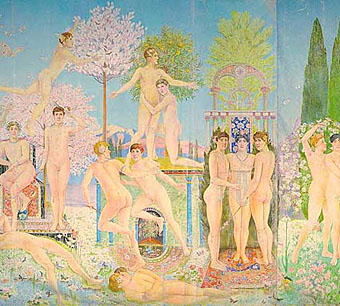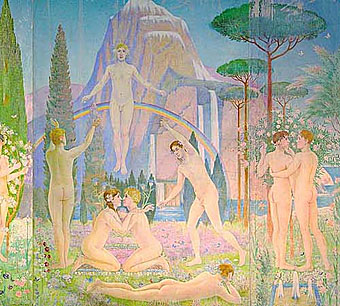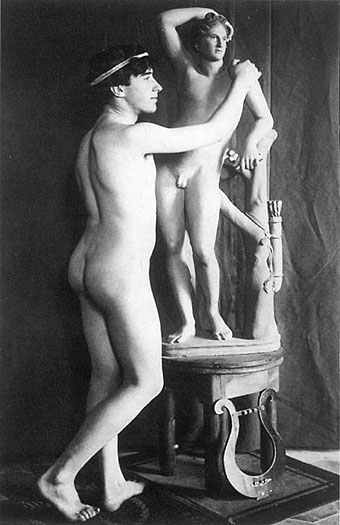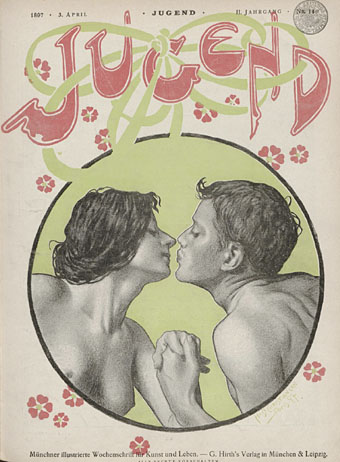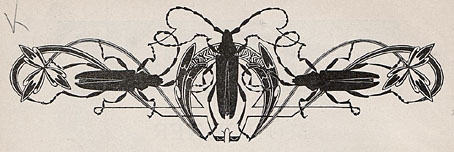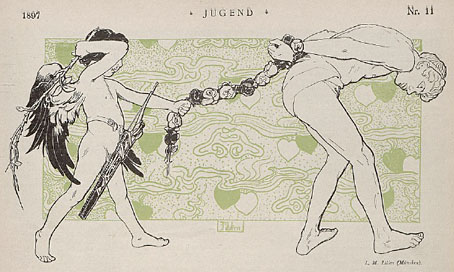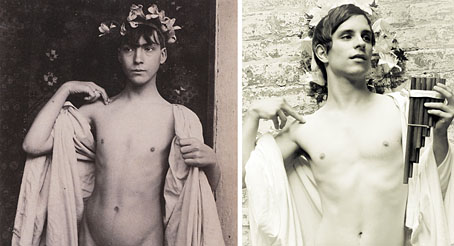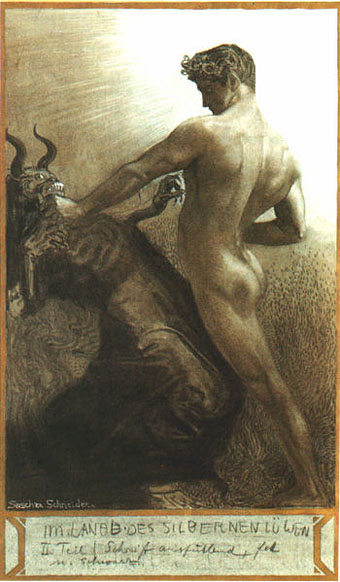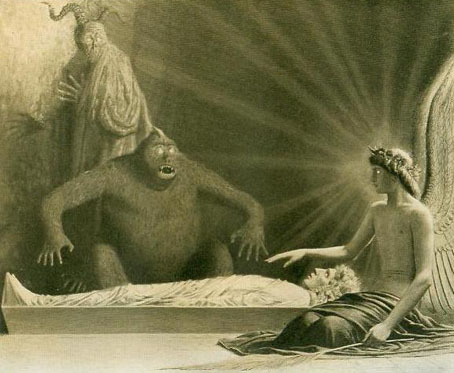The Clear World of the Blessed Souls (detail).
Once again the web proves beneficial in showing you something you didn’t expect to find. The Sanctuarium Artis Elisarion was the grandiose name given by Elisar von Kupffer (1872–1942) aka Elisarion to his art-filled villa at Lake Maggiore which he shared with his partner Eduard von Mayer. Kupffer was an artist, writer, historian and another of those rare pioneering gay men who used their position and their work to proselytise for social tolerance of same-sex attraction.
The Clear World of the Blessed Souls (detail).
Kupffer and Mayer’s Sanctuarium is documented at this site (Italian and German language only) with details of the artist’s paintings and the villa’s extraordinary mural, The Clear World of the Blessed Souls, which depicts a luscious homoerotic paradise. Also present are a few of the photos Kupffer used as a basis for his paintings (below). The mural title refers to Klarismus (Clarity), apparently the name of Kupffer and Mayer’s spiritual philosophy and a creed which evidently involves lots of naked boys. Where do I sign up?
Elsewhere on { feuilleton }
• The gay artists archive
Previously on { feuilleton }
• The art of Sascha Schneider, 1870–1927
• The art of Andrey Avinoff, 1884–1949

